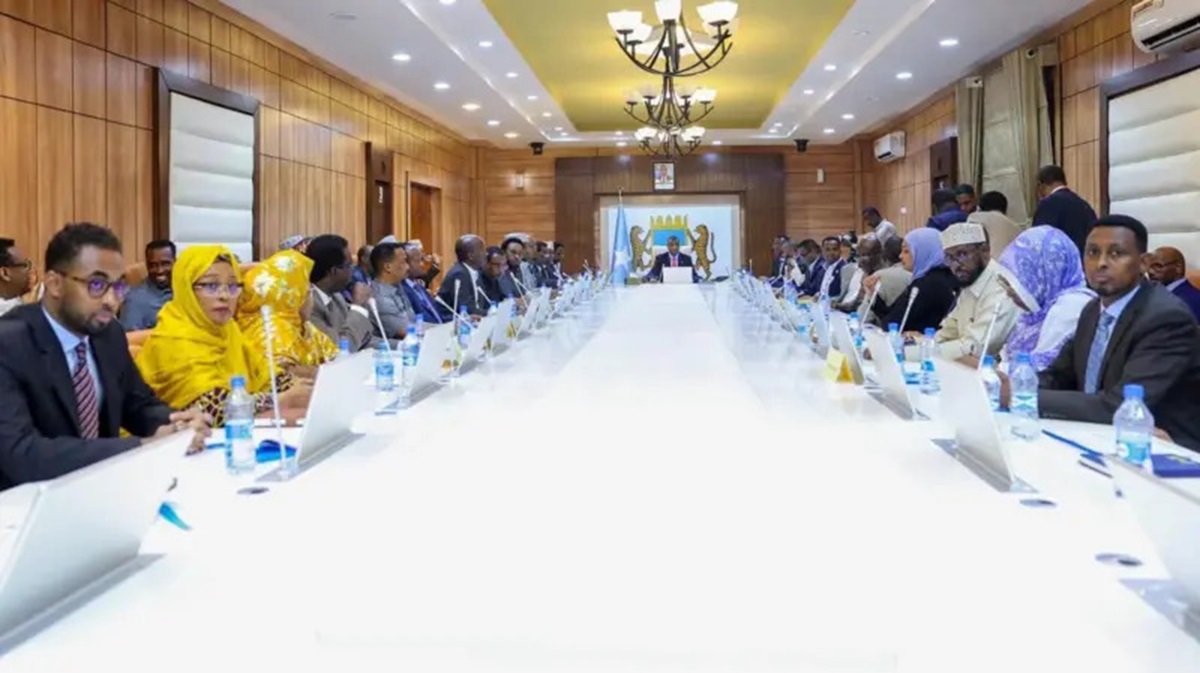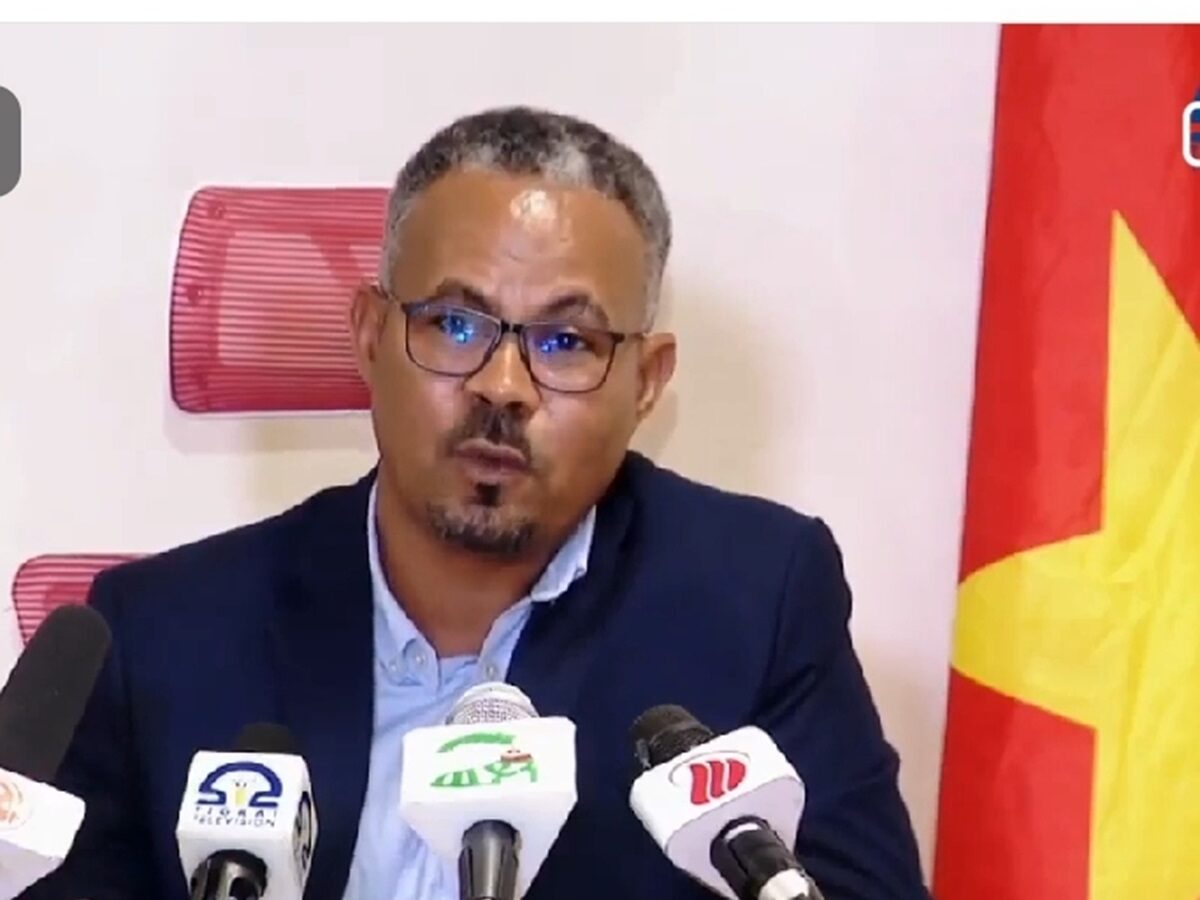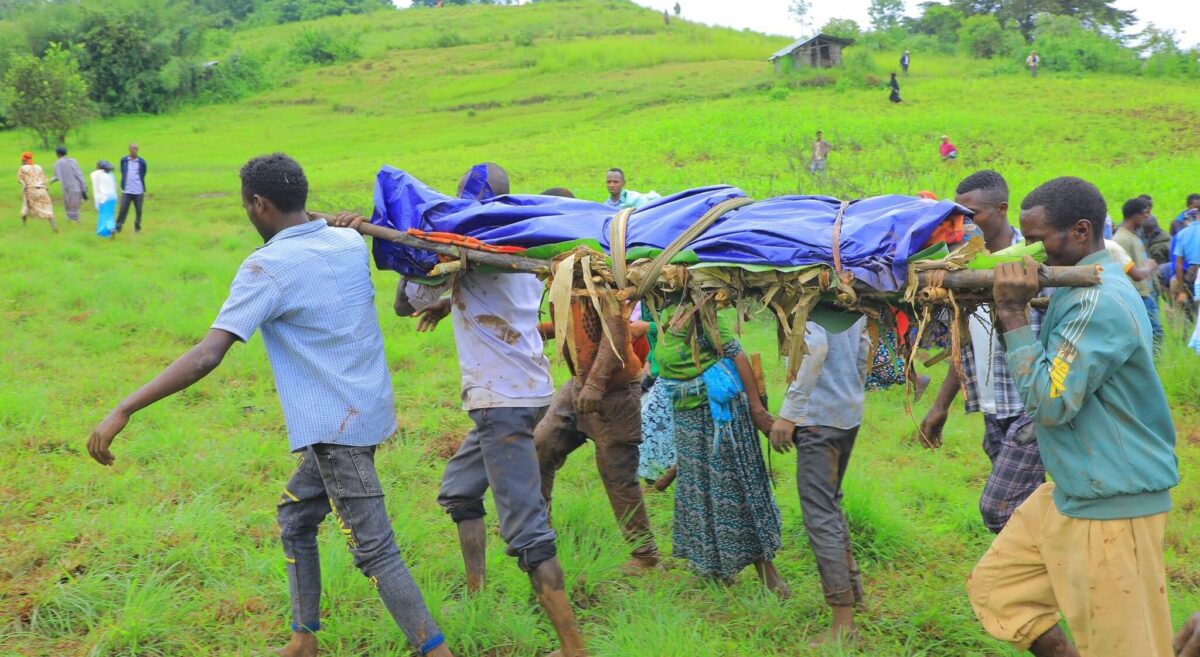Open Letter to Members of the AU-High Level Panel

By Mehari Taddele Maru @DrMehari
HE Uhuru Muigai Kenyatta CGH.
HE Chief Olusegun Obasanjo GCFR.
HE Dr Phumzile Mlambo-Ngcuka.
Dear Members of the AU-High Level Panel,
I am writing this letter to add my voice to those that have already expressed concern about the continued violation of human rights in Tigray. These violations include continued summary executions of civilians, kidnapping of young Tigrayans, looting and destruction of properties, deliberate methodical continuation of the siege in varied forms and the slow implementation of the Permanent Cessation of Hostilities Agreement (CoHA) signed in Pretoria November 02, 2022. I am copying this letter to other relevant officials.
Like others, I greatly appreciate your continued commitment to bringing peace to the territory. Nonetheless, your continued silence in the face of apparent breaches of the agreement, including reported killings, the continued presence of Amhara and Eritrean forces, and what appears to be systematic obstruction of humanitarian access, is likely to cause confusion concerning your precise position. It is hurtful, to read HE Olusegun Obasanjo recent statement in the financial times that the Eritrean forces have withdrawn to the Eritrean border, while they are still committing extensive atrocities in many towns in Tigray.
It has been almost three months since the government of Ethiopia and the Tigray People’s Liberation Front (TPLF) signed the CoHA (the ‘Pretoria deal’) and its addendum declarations of Nairobi, which together form an agreement to end Ethiopia’s war on Tigray. The main promises contained in the agreement are as follows:
1. Disarmament of the Tigrayan forces (TDF);
2. Concurrent withdrawal of non-Ethiopian National Defense Forces from Tigray;
3. Provision of general security and the protection of civilians;
4. Unhindered humanitarian access, including facilitating the return and reintegration of internally displaced persons (IDPs) and refugees; and
5. Confidence-building measures, including restoration of essential services in the Tigray region within agreed time-frames, and the deployment and functioning of a monitoring, verification and compliance mechanism that will report ‘instances of violation’ and ‘inform the two parties to … take immediate measures to rectify’. At the same time, ‘if the violation is not rectified within 24 hours, the AU, through its High-Level Panel, will convene the Joint Committee to resolve the problem’.
Withdrawal of Eritrean forces
Under Article 3 of Deal, Eritrea’s withdrawal from Ethiopia is a key step toward ending the war on Tigray. Eritrean and Amhara forces have not withdrawn. On the contrary, Eritrean forces have been reported as digging trench fortifications inside Tigray, in particular near Adigrat. Given the high number of atrocities committed by Eritrean forces, delays in this regard have already cost thousands of lives. It would be naïve to expect the Eritrean regime to withdraw voluntarily, which in turn raises the question of exactly what the parties to the agreement, the mediators, and supporters are planning to do to ensure immediate and permanent withdrawal of these forces under the Deal.
Would it not be reasonable to allow the presence of independent international media to determine whether Amhara and Eritrean forces have withdrawn, and if not, why?
Article 10 of the agreement merely states that ‘parties commit to resolving issues of contested areas in accordance with the Constitution of the Federal Democratic Republic of Ethiopia’. What is the mediators’ position if and when the Amhara forces don’t withdraw to their constitutional boundaries? Recent reports of the withdrawal of Amhara forces have been dismissed as false by many independent sources. Does the Mediation and Monitoring, Verification and Compliance Mechanism, included in the Deal, aim to verify, and report on this process, which should it fail could trigger a relapse into war? Would it not be reasonable to allow the presence of independent international media to determine whether Amhara and Eritrean forces have withdrawn, and if not, why?
Protection of civilians
Although no fighting has been reported, hostile acts have not ceased. Eritrean and Amhara forces, which remain in control of most areas in Tigray, are killing and abusing civilians and plundering what remains. According to a recent report, well over 3,000 civilians in Tigray have been killed since the Deal was signed. While the focus of the Deal remains on disarmament of the Tigrayan Defense Force, its other provisions apparently are being neglected.
Despite the agreement, civilians are still being killed and abducted. As well as the number of deaths noted above, the brutality of these attacks has resulted in more than 100 kidnappings in particular of residents of Irob and Kunama, minorities that are facing extinction by the atrocity crimes of the Eritrean forces. Looting and the destruction of public and private property by Amhara and Eritrean forces have also been reported. In many parts of Ethiopia, prisoners have been killed; many are still languishing in detention centres, either official or informal in nature.
Provision of aid
Since the Deal was signed, humanitarian access has shown some improvement. Since the Deal, humanitarian assistance now reaches some of the target population (WFP required 100 trucks per day, only 153 trucks were admitted as 12 January) and a second round of food distribution that began in 2022, is now being completed; put in simple terms, this means that Tigrayans in need have received only two months’ worth of rations (30kg of food ration) over the past 13 months. Over the course of 2021, barely two months of food were distributed to the population. UN and NGO reporting and public statements on this is definitive. Furthermore, no mechanism exists to verify whether or not reported aid to Tigray distributed by the Ethiopian government is actually reaching the needy in that state.
Distribution, it seems, in many places is still being obstructed and remains conditional on the will of the Ethiopian government, not on the needs of the people on the ground. Aid trucks have been delayed, and only limited aid is trickling through to urban dwellers, mostly to those living off the main roads. Aid and fuel convoys face many, mostly bureaucratic delays (which include a requirement to present an Ethiopian Disaster Risk Management Commission letter), to the extent that only 153 trucks were recently recorded as having arrived over two weeks. The quantity of aid delivered is too limited. For the children that have been screened in Tigray, 33% suffer from Global Acute Malnutrition (GAM) which is double international standards for critical and life-threatening conditions. Worse still, the 3.14% found to suffer from Severely Acute Malnourished (SAM), is three times higher than global emergency thresholds.
People living in villages away from main roads (that is, the majority of Tigrayans) are still unreachable by aid programs, because most distribution is limited to the residents of, or those arriving at, settlements abutting on to main roads. Humanitarian agencies, including those of the UN and of NGOs operating in the territory, for the most part is unable to traverse territory held by armed groups; this applies particularly to movement in areas under the control of Amhara and Eritrean forces.
Restoration of services
Although domestic flights restarted and a small number of phone connections have been restored, these services are plagued by restrictions of various kinds. Like other basic services, access to fuel is reported as ‘unlimited’ but this is far from accurate; there is very little fuel in Tigray and there are long queues to purchase what limited supplies there are. Fuel distribution seems to be deliberately restricted by federal and local entities.
Banking services are very limited and inaccessible even to humanitarian agencies, which consequently are forced to transport money by air – and then only the amount permitted by the Ethiopian government. Individuals are allowed a maximum withdrawal of USD 40 per day from their accounts, and then only in a limited number of branches.
Free movement is heavily restricted; road transport remains closed and Tigrayans are not allowed to move out of Tigray; no one has taken responsibility for imposing such restrictions on movement out Tigray for those above the age of 18.
Hundreds of thousands federal and Tigray state government employees have not been paid their salaries in the last two years. Unable to feed their households, several had committed suicide. Still no salary has been paid
Free movement is heavily restricted; road transport remains closed and Tigrayans are not allowed to move out of Tigray; no one has taken responsibility for imposing such restrictions on movement out Tigray for those above the age of 18. Furthermore, there are well-authenticated reports of Tigrayans being subjected to de-humanizing, discriminatory treatment at Bole International Airport. This suffering could be alleviated simply by ending the siege through restoring banking services and lifting barriers to free movement of persons and to aid organizations, goods, services and capital.
Moreover, Tigray remains off limits to international and independent news media.
Monitoring and Verification Mechanism
Understandably enough, your focus and that of the African Union Monitoring, Verification and Compliance Mechanism (AU-MVCM) is on disarmament. But there is no reported progress in implementing other components of the agreement, such as preventing the murder and kidnapping of civilians, and addressing the status and condition of IDPs. To the public, the AU monitors appear to be interested more in verifying Tigray forces’ disarmament than in protecting civilians, even though the disarming of Tigrayan forces does not guarantee sustainable peace.
Even more worrisome is the continued presence of Eritrean and Amhara state and non-state forces, despite the best efforts to report their withdrawal. It should come as no surprise to you that it is their very presence, and actions, alongside continued bureaucratic denial of basic services by the Government that present the greatest risk not only to the civilian population but also to lasting peace.
The importance of implementing the Deal can hardly be over-emphasized. As of now, the success of COHA hinges more on vague hopes for a restoration of normality, than actual progress toward a peace dividend. If widely so many touted expectations go unfulfilled the result is frustration; already the hopes placed in the Deal are starting to dissipate, and absent any real progress could soon be replaced by despair. Signs of this reaction are already emerging. What initial gains there have been are fragile and all too easily reversible.
I submit for consideration five steps that could improve the situation.
First, and essentially, you, with the backing of the international community, have the authority to demand that the Ethiopian government and the TPLF comply with the Pretoria deal and ensure the immediate withdrawal of Eritrean and Amhara forces, the protection of civilians, the provision of unimpeded humanitarian access, and an end to the siege on Tigray including the unrestricted banking and transportation services, lifting of travel restriction on the youth and access to independent international media.
Without tangible improvements on these matters, claiming the situation to be at a ‘point of no return’, as has been mooted, is not only to trivialize the suffering of millions but also to reveal a misunderstanding of the situation on the ground. It is vital that you explore the most appropriate measures to deal directly with these implementation problems.
Second, it is necessary to draw up and publish immediately a progress report on the Deal’s implementation to date.
without accountability for the most heinous crimes in Tigray and elsewhere in Ethiopia, war and more war crimes will be the hefty price future generations will pay for today’s elite agreement to confer blanket impunity.
Third, sustainable peace will require substantive political discussions to address the root causes of war – in this case, security against an existential threat to Tigrayans – while respecting state sovereignty. You need to press the federal government and all other authorities and armed groups in Ethiopia including in Tigray and Oromia to start the political dialogue.
Fourth, in order to verify the contradictory claims and accusations now surfacing, you should demand that the Ethiopian and Tigrayan authorities to allow and facilitate access to international and independent media.
Fifth, without accountability for the most heinous crimes in Tigray and elsewhere in Ethiopia, war and more war crimes will be the hefty price future generations will pay for today’s elite agreement to confer blanket impunity. You need to take the AU to task to take the necessary measures in supporting regional or international mechanism of accountability. The least can be done is to pressure the Ethiopian government to allow the UN International Commission of Human Rights Experts on Ethiopia (ICHREE) and the AU Commission of Inquiry on the Situation in Tigray access Tigray and other part of Ethiopia to conduct extensive investigation of all alleged atrocities
Last, if possible, you should remain actively engaged in the process until its complete implementation, to do everything within your power to build on the whatever gains have come about through the Deal, and urgently to explore the most effective routes to direct intervention on these problems.
Your very truly,
Mehari Taddele Maru
CC: HE Workneh Gebeyehu,
Executive Secretary, Intergovernmental Authority on Development (IGAD)
HE Hanna Tetteh,
Special Envoy of the UN Secretary-General for the Horn of Africa
HE Michael (Mike) A. Hammer
United States Special Envoy for the Horn of Africa
Major General Stephen Radina
African Union Monitoring, Verification and Compliance Mechanism (AU-MVCM)








